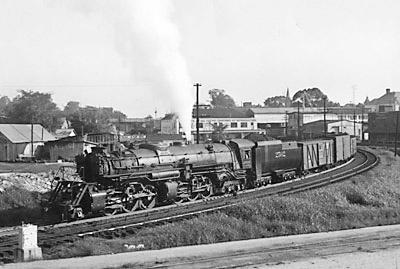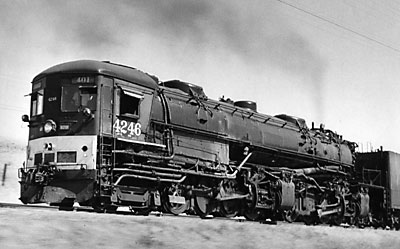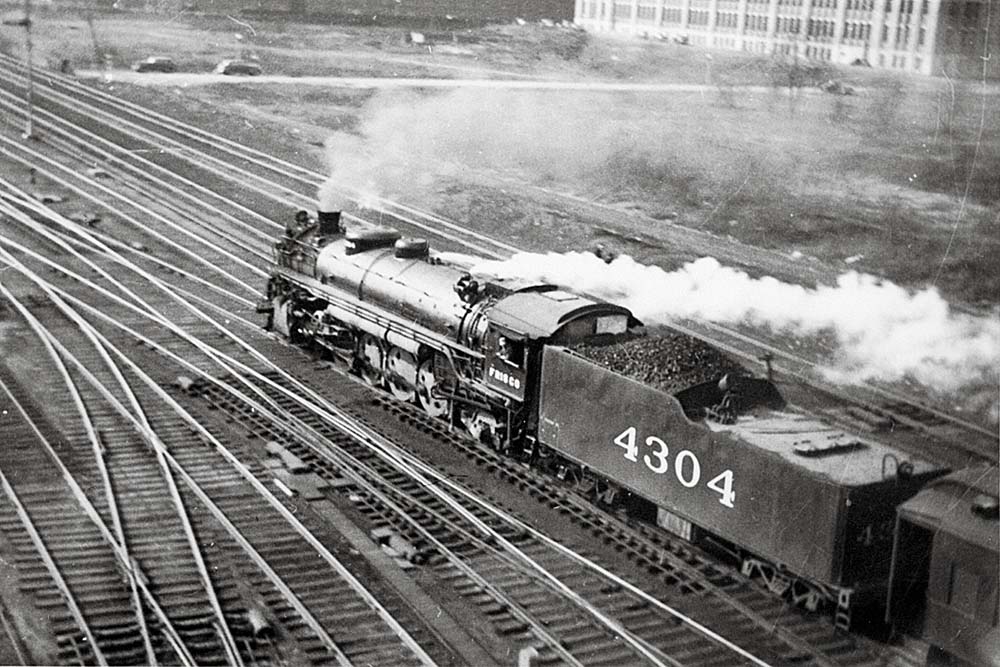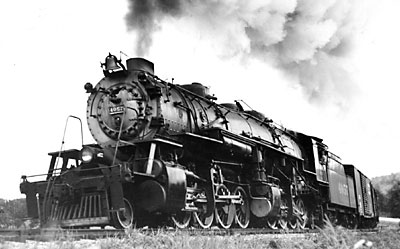
Baldwin sent fifteen more 2-8-8-2s to the SP in 1909. These engines were oil burners with a cab-forward configuration that placed the locomotive cab in front of the boiler, improving visibility and breathing conditions for engine crews when operating in tunnels and snowsheds. SP received 32 more cab-forward 2-8-8-2s between 1911 and 1913. They found a ready home pulling trains across Donner Pass in the Sierra Nevada Mountains.
Northern Pacific got five 2-8-8-2s from Baldwin in 1910. That same year, Delaware & Hudson ordered six 0-8-8-0s from Alco. And on it went.
These big engines began to fill an important role on railroads that were running heavy trains over mountain grades. One large Mallet could replace two or even three smaller single expansion engines, and gave the railroads a big boost in productivity. Furthermore, the locomotives increased line capacity since fewer, albeit bigger, trains could be run.
After 1910, Mallets were equipped with superheaters, which added substantially to the power of the engine. Over the decade, many new railroads acquired Mallets, while those that already used them ordered more. Norfolk & Western, Southern, Virginian, Clinchfield, Rio Grande, Reading, Western Maryland, Missouri Pacific, Frisco, and Duluth, Missabe & Iron Range all bought 2-8-8-2s.
Variations on the wheel arrangement were also developed. Great Northern received thirty-five 2-6-8-0s from Baldwin in 1910. Baltimore & Ohio, Kansas City Southern, Union Pacific, and Great Northern operated fleets of 2-8-8-0s. The Virginian even owned 2-10-10-2s. Eventually, just about every railroad that handled heavy trains over mountain ranges owned eight-coupled Mallets.
An important milestone in the Mallet’s development was the introduction of the United States Railroad Administration 2-8-8-2 in 1919. Built with 57-inch drivers, the locomotives could produce 101,300 lbs. of tractive effort and weighed 531,000 lbs. While a number of railroads that received them might have preferred their own designs, the USRA engine quickly proved itself, and most Mallets built after World War I owed something to the USRA design.
However, by the middle of the 1920s railroads lost interest in acquiring additional Mallets, with one exception. Although it could handle heavy trains, the Mallet was still a drag engine, capable of speeds no greater than 20-25 mph. At higher speeds the Mallet rapidly lost power – a limitation that greatly restricted its use.
Railroads in the 1920s needed a locomotive that combined the lugging ability of the Mallet with the speed of a 2-8-2. They began to look at simple articulated designs as the solution. Unlike Mallets, simple articulated locomotives had high-pressure cylinders in both the front and rear engines, which allowed the locomotive to reach higher speeds and operate more efficiently.
Great Northern took one of its compound 2-8-8-0s and converted it to a simple engine with excellent results in 1924. Also in 1924, the Chesapeake & Ohio, which had been unable to use big Mallets because of tunnel restrictions on its main line over the Alleghenies, ordered 25 simple 2-8-8-2s from Alco.
Classified H-7s, they proved to be eminently successful. Two of the squat, long locomotives (one pulling, one pushing) could ably haul 10,000-ton coal trains on C&O’s Mountain Division between Hinton, W.Va, and Clifton Forge, Va. In 1926, C&O received twenty more from Baldwin. They were used to wheel coal northward from Russell, Ky., to Columbus, Ohio, although their 57-inch drivers limited the speed they could achieve on that portion of the line.
Other railroads took notice of C&O’s success with the simple articulated. Great Northern, Rio Grande, Southern, and Western Pacific all ordered large and powerful simple 2-8-8-2s. These engines could produce the power needed to conquer Western mountain grades, and with 63-inch driving wheels, could cruise at 45 to 50 mph on flatter terrain.
Still other roads, including Union Pacific, Southern Pacific, Great Northern, Southern, DM&IR, and B&O, went back and rebuilt their Mallets into simple engines.
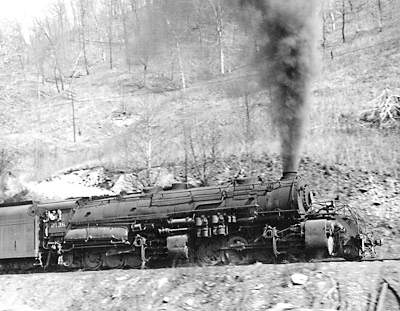
Engine weight rose from 531,000 to 612,000 lbs. Boiler pressure went from 240 psi. to 300 psi. Tractive effort increased from 101,000 lbs. to 127,000 lbs. Grate area increased by 10 square feet. Roller bearings were added to all axles. The locomotives received feedwater heaters, big tenders, and other new appliances. Roanoke continued to build modern Mallets into the 1950s. The last, No. 2200, was outshopped in 1952.
By then, more than 1,000 2-8-8-2 Mallets had been built for service in America, along with another 100 or so simple 2-8-8-2s. The last to operate were N&W’s Mallets – some of which remained in service right to the end of steam.






